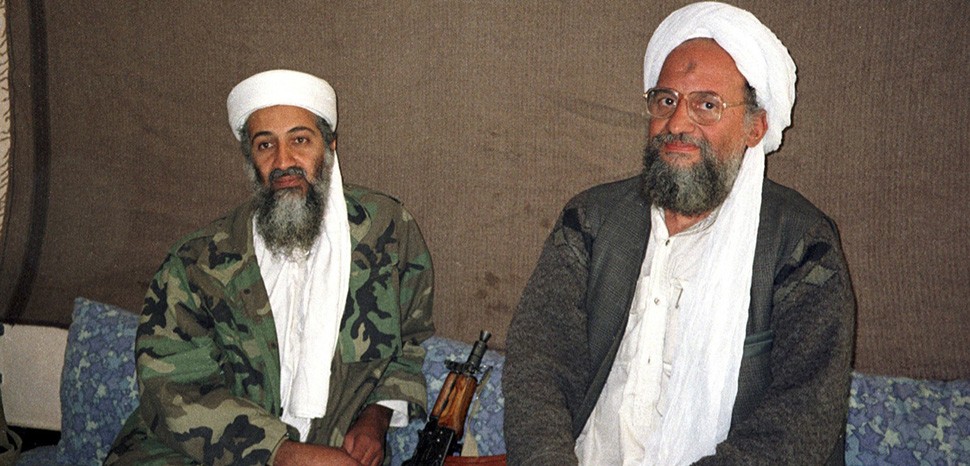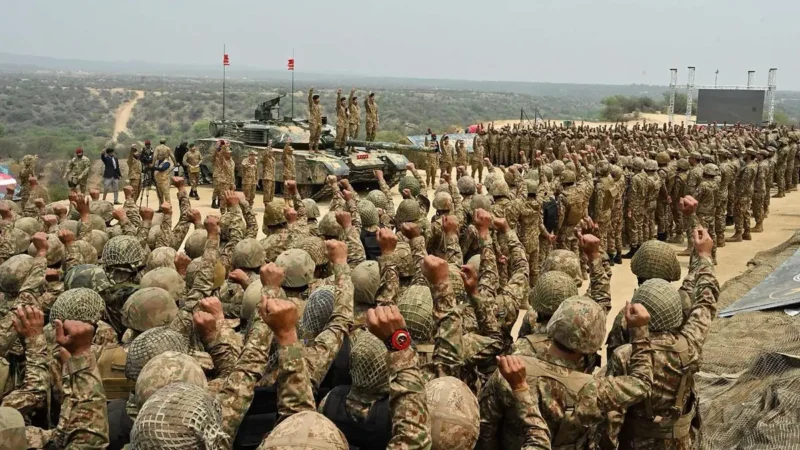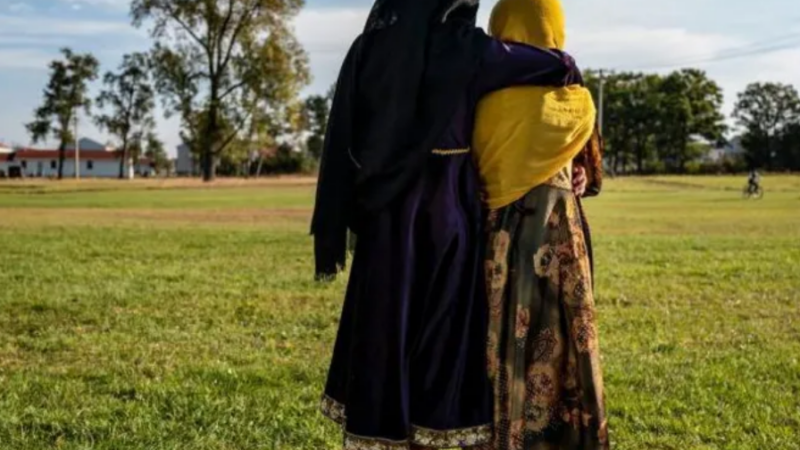The Taliban’s Strategy to Strengthen and Govern al-Qaeda

In addition to plunging the Middle East back into turmoil, the Israel-Gaza crisis has resulted in entities around the world seeking to exploit the palpable tensions, and has even led some young Americans to re-evaluate al-Qaeda’s past comments on Palestine. At the same time, the global jihadist group itself is showing concerning signs of revival, having found refuge in Afghanistan under the Taliban.
The current Taliban regime has renewed its symbiotic relationship with the remnants of al-Qaeda. And though their global return may not be imminent, it must be remembered that the terrorist group is laying low by choice. Under this arrangement, al-Qaeda has agreed to stay under the radar, for now, in order to aid the Taliban’s international image of upholding their promise to prevent extremist organizations from using Afghanistan as a safe haven. Yet al-Qaeda views the Taliban-controlled country as precisely that—a base in which they can regrow and expand.
Those who lobby to recognize the Taliban make the case that they have changed and acknowledged their missteps. These individuals claim that security in Afghanistan has increased under the Taliban, seeming to forget or ignore the fact that the Taliban themselves were the biggest threat to civilian lives prior to seizing power. They argue the Taliban has stopped opium production, but appear oblivious to the fact that that’s due to the group’s diversification into methamphetamines. They insist that the Taliban is committed to rebuilding the nation and that engaging with the group will help to moderate them when it comes to issues like state-sanctioned misogyny and harboring terrorists. There is even a perception that al-Qaeda is unlikely to reconstitute in Afghanistan. But ground realities prove otherwise.
Across the last two decades, al-Qaeda has had to balance the twin tasks of legitimization and grassroots mobilization with the often-conflicting goals of maintaining an exclusive organization characterized by tight discipline, restricted membership, and doctrinal purity. With the Taliban’s return to power in Afghanistan, however, al-Qaeda now has the opportunity to reconcile these issues by achieving political integration with the Taliban, alongside an armed struggle for global jihad. This approach can be traced back to one man in particular: al-Qaeda’s recently killed leader, the Egyptian doctor, Ayman al-Zawahiri.
The strategy is a response to three factors that limited al-Qaeda’s effectiveness while the group hid out in Pakistan during the War on Terror—structural incongruence due to the loss of its leaders in U.S. counter-terrorism operations, ideological competition with ISIS for control of the global jihadist narrative, and the problem of legitimacy with emerging generations of extremists. A shift towards greater incorporation within the Taliban, as laid out by al-Zawahiri himself, is aimed at avoiding potential schisms as part of a comprehensive organizational transformation and serves to insulate al-Qaeda from future counter-terrorism operations.
Upon taking over as al-Qaeda leader after bin Laden’s death in 2011, al-Zawahiri initially linked ideology with tactics, reiterating the organization’s identity as a violent movement tasked with the revolutionary overthrow of regimes across the Islamic world. Over time, the necessity to survive and stay relevant forced al-Zawahiri to revise al-Qaeda’s ideology, or risk divisions and dismemberment.
In September 2013, al-Zawahiri issued his seminal General Guidelines for the Work of Jihad, in which he emphasized the need for self-discipline. He noted that al-Qaeda’s strategy “is a long one, and jihad is in need of safe bases,” adding, “If we are forced to fight [local regimes], then we must make it clear that our struggle against them is a part of our resistance against the Crusader onslaught.” Although al-Zawahiri mentioned the West as the first priority target, he also knew that executing a more sophisticated local strategy would aid al-Qaeda’s long-term development, by guaranteeing an operational space in which they could function and grow. In other words, al-Qaeda needed local allies whom they could depend on for protection—like the Taliban.
The predictably catastrophic evacuation of Western forces from Afghanistan and the Taliban’s immediate takeover thereafter thus enabled al-Qaeda to meet a key expectation al-Zawahiri had set out—namely, that the terrorist group and its affiliates could survive “long wars” with the U.S. and its closest allies, which would bleed the West of its resources and undermine its influence globally.
According to a June 2023 UN report, senior al-Qaeda leaders in Afghanistan are primarily located in Kabul, Kunar, Kandahar, and Helmand, and number in the dozens. In terms of foot soldiers, there are around 400 al-Qaeda fighters in Afghanistan and up to 2,000 if relatives and sympathizers are included. These networks operate in the southern, middle, and eastern parts of the country and maintain a low profile, attempting to limit their communications as much as possible to evade monitoring by international counter-terrorism agencies. Al-Qaeda has also established safe houses in Kabul, Helmand, Farah, and Herat, where a new al-Qaeda media apparatus has been set up.
That same report declares that al-Qaeda training sites have been created in Helmand, Zabul, and Nangarhar and that eastern Afghanistan especially, Nuristan and Kunar provinces in particular, is also host to al-Qaeda camps, one of which is specifically dedicated to training suicide bombers. Dozens of foreign terrorist fighters (FTFs) from the Middle East and North Africa have arrived in these locations thus far.
Setting up such facilities is one of al-Qaeda’s main goals at present, as the group is currently in a restructuring phase. Their other objectives consist of building operational capability; recruiting and mobilizing; conducting outreach with allies and affiliates; and developing bases of support. In addition to the Afghan Taliban, al-Qaeda is supported by al-Qaeda in the Indian Subcontinent (AQIS), which is made up predominantly of jihadists from Pakistan. AQIS fighters are located in Kandahar, Helmand, Herat, Farah, and Nimruz provinces.
As al-Zawahiri envisioned, al-Qaeda’s cultivation of infrastructure and personnel in Afghanistan is designed to offer the terrorist group safety and connectivity. Senior leaders are primarily situated near the border with Pakistan, to ensure they can move back and forth unhindered. The locations of training camps and safe houses along the borders of southwest Pakistan and Iran provide further insulation from counter-terrorism operations, as well as a gateway to the Middle East. Kabul then serves as the mainframe that brings these constituent parts together, with all of this activity conducted under the protection of the Taliban regime.
Al-Qaeda’s bureaucratic nature means its layers of administrative responsibilities and standard operating procedures have made working in tandem with the Taliban regime all the more seamless. With the support of the proscribed Haqqani Network, who are responsible for killing thousands of Afghans and hundreds of coalition soldiers, al-Qaeda’s members have sought employment in the Taliban’s law enforcement and public administration agencies to protect and oversee their cells across Afghanistan. To demonstrate their loyalty, in return, al-Qaeda members have offered their backing and protection to top Taliban figures.
An example of this co-dependent dynamic in action involves Taj Mir Jawad, a senior Taliban commander and member of the Haqqani Network. He was also a former leader of the Kabul Network, a group comprising Taliban and al-Qaeda elements that coordinated suicide attacks against the U.S. and other coalition troops. Jawad is now the Deputy Director of the Taliban General Directorate of Intelligence, whose Department 12, which oversees all FTFs in Afghanistan, also supervises al-Qaeda’s activity within the country.
The Taliban governors of Kapisa and Nuristan, Qari Ehsanullah Baryal and Hafiz Muhammad Agha Hakeem respectively, are also linked to al-Qaeda. Baryal is said to have been a senior leader of the Kabul Network alongside Taj Mir Jawad. Hakeem is closely tied to Qari Zakir, who was in charge of the Haqqani Network’s suicide operations as well as the Taliban’s special forces unit known as the Badri 313 battalion, which was created with the help of al-Qaeda.
The Taliban gives al-Qaeda members monthly welfare payments, some of which trickle down to affiliates like AQIS. Al-Qaeda training manuals are used at the facilities of the Taliban Ministry of Defense, whose training director is an al-Qaeda member. The head of the Ministry of the Interior, Sirajuddin Haqqani, retains deep ties to al-Qaeda, and, accordingly, his office has been handing out identity documents to al-Qaeda members across Afghanistan. The Taliban’s supreme leader, Hibatullah Akhundzada, has called for continued protection of al-Qaeda’s members.
First under bin Laden and then al-Zawahiri, al-Qaeda helped the Taliban and Haqqani Network establish a solid resistance base in Pakistan against the U.S. and allied forces, which led to a Taliban resurgence. Al-Zawahiri also collaborated with the Haqqani Network to assist them in consolidating their power in Afghanistan over other Taliban factions. The claim that there is a clear distinction between the Taliban, al-Qaeda, and Islamic State Khorasan Province (IS-KP) too, is not only debatable, but reveals a deeply flawed understanding, as the Haqqani Network serves as the bridge between these entities.
The inextricable links between al-Qaeda and the Taliban have been further consolidated with marriage and kinship ties, the pledging of bay’ah (oath of allegiance), and a shared history on the battlefield, where al-Qaeda fighters combating Western forces on the frontlines alongside the Taliban. So close was the bond between the Taliban and al-Qaeda that al-Zawahiri himself was discovered living in a palatial Haqqani-owned villa in Kabul’s embassy quarter when he was killed in an American drone strike on July 31, 2022. It is also unlikely that he was the only terrorist being housed in the center of the capital—should Western embassies eventually reopen in Kabul, they too may find their neighbors to be al-Qaeda members.
One of al-Zawahiri’s legacies was developing and enhancing these crucial relationships to ensure al-Qaeda remained relevant, albeit in a deliberately understated way. By demonstrating strategic patience, al-Qaeda has successfully entrenched itself within the Taliban by diversifying in proto-governance, which has been designed to build deeper roots within Afghan society, to garner the Taliban’s support and operate safely without the concern of betrayal or expulsion. Al-Qaeda remains a clandestine army in Afghanistan, but under the blueprint laid out by al-Zawahiri, it is now also a key element of the Taliban’s political infrastructure.
Whether practical or aspirational, al-Qaeda retains the belief that it is a self-appointed vanguard of the global jihadist movement whose actions will spearhead the removal of apostate rulers from the Middle East and North Africa. As long as Afghanistan remains dystopian under Taliban rule, al-Qaeda will be able to flourish and nurture a new generation of FTFs.
Some have underestimated the threat that al-Qaeda poses today. Others fail to grasp the degree of infiltration al-Qaeda has achieved within the Taliban administration at both the local and national levels. Al-Qaeda is carefully recalibrating, recruiting, training, and networking—both with the regime in Afghanistan as well as other regional affiliates— thanks to patronage, sponsorship, and support from the Taliban. It is premature to pen al-Qaeda’s obituary. In fact, it has been written countless times these past two decades, with every American president since 9/11 having claimed victory over them.
The siren song about recognizing the Taliban will not change their fundamental positions on al-Qaeda, who in turn can now abuse tensions within the Islamic world in light of the current crisis in the Middle East. Conferring legitimacy upon the regime could lead to future scenarios where foreign officials find themselves receiving a Taliban guard of honor with al-Qaeda fighters forming part of the contingent. Diplomats may even participate in meetings with the Taliban while al-Qaeda members serve as note-takers. Those advocating for recognition must consider whether they are willing to accept that sobering reality.






